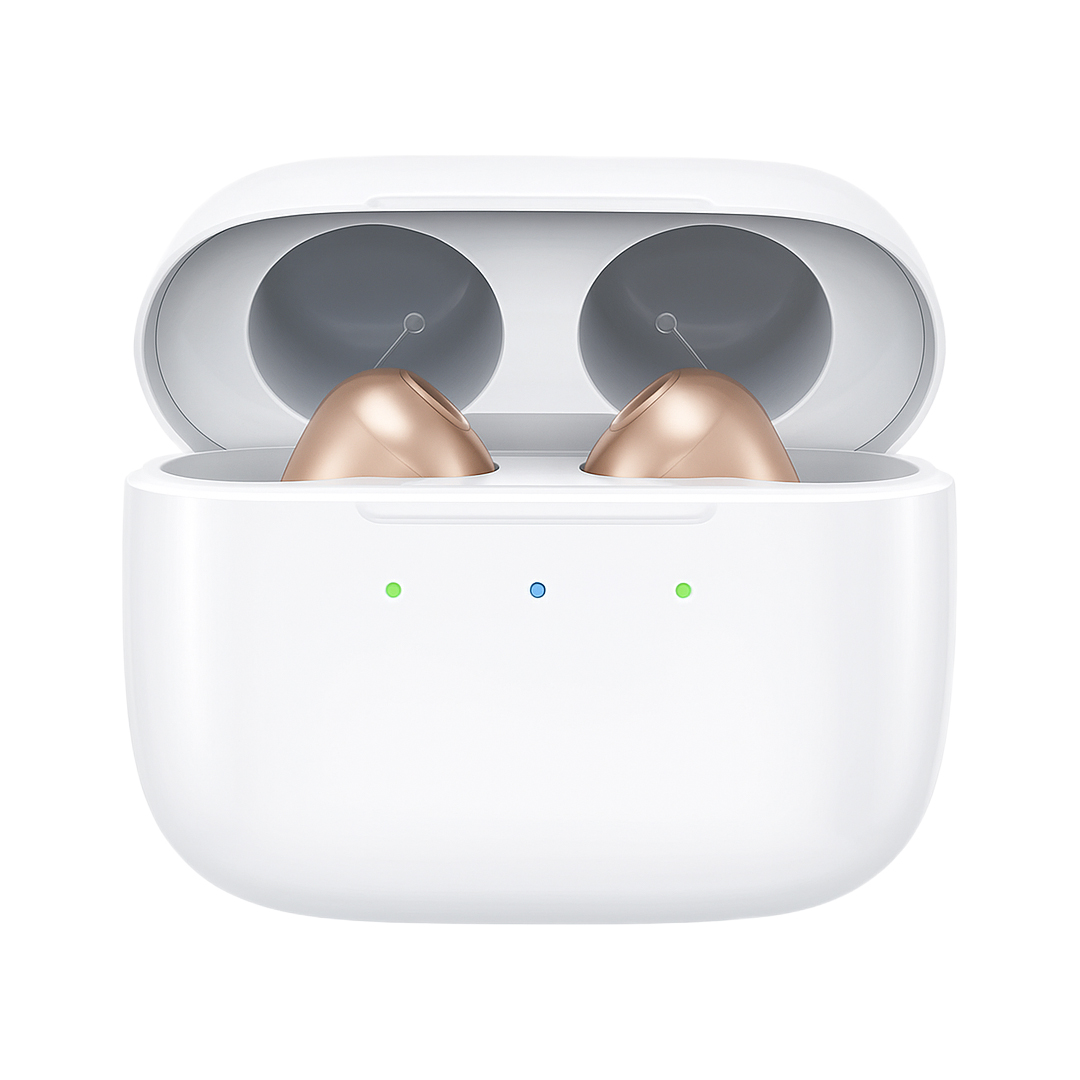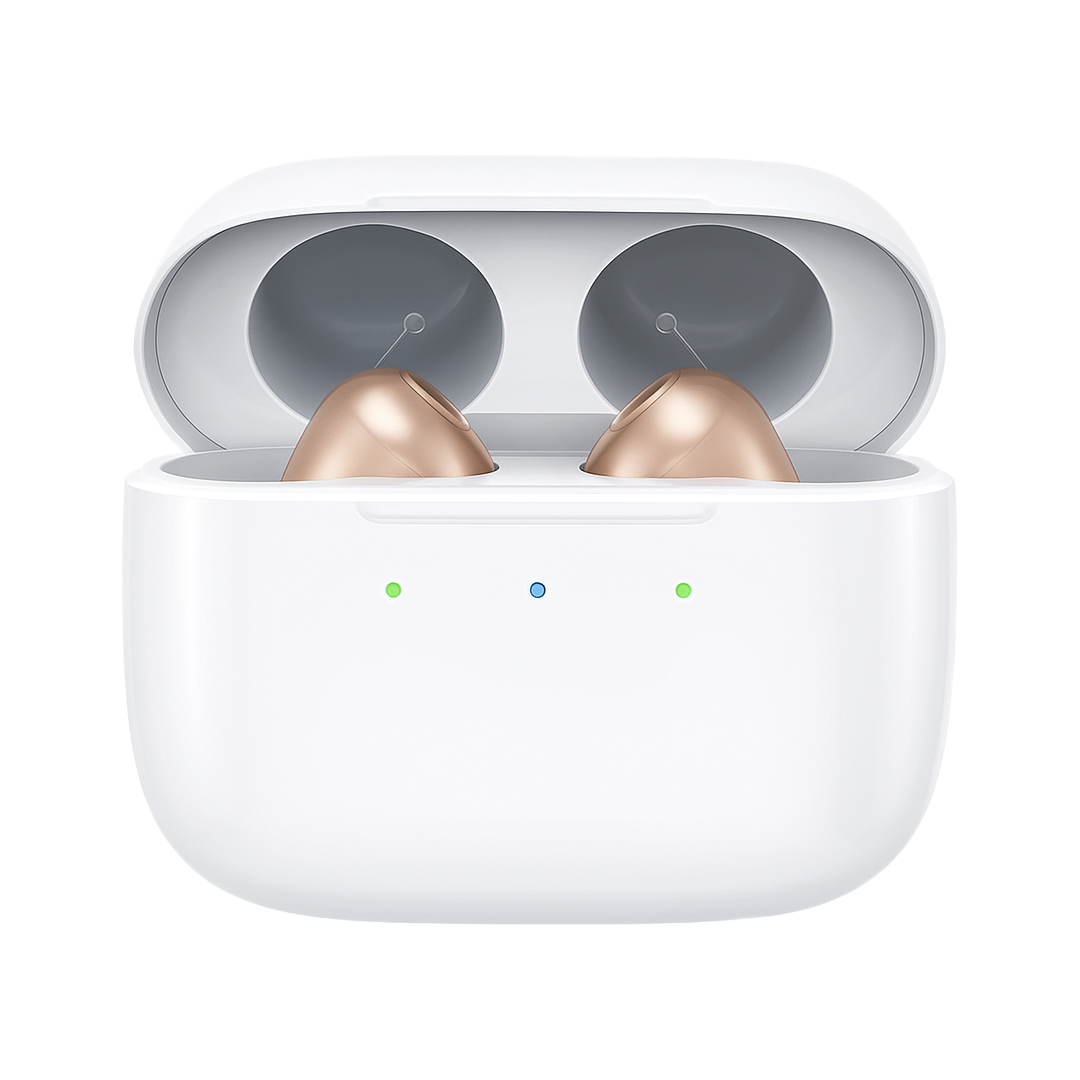The Future of Hearing Technology: What's Coming Next
If someone had told you twenty years ago that you'd be carrying a computer in your pocket that could video call your grandchildren across the country, you might have chuckled. Yet here we are, casually FaceTiming with family while grocery shopping. The same kind of remarkable transformation is happening in hearing technology right now – and the changes coming are nothing short of extraordinary.
The hearing aids your parents wore were impressive for their time, but they were essentially sophisticated amplifiers. Today's devices are miniature computers that can learn, adapt, and connect to the world around you. Tomorrow's hearing technology? It's going to make today's devices look like those old transistor radios.
Your Hearing Aids Are Getting Smarter Than Your Smartphone
Artificial intelligence isn't just for tech billionaires anymore – it's coming to your ears. The next generation of hearing aids will learn your preferences faster than you can teach them. They'll remember that you prefer more bass when listening to music, that you need extra clarity when talking to your soft-spoken neighbor, and that you always want the TV volume boosted during evening news.
But here's where it gets really interesting: these smart devices will start predicting what you need before you know you need it. Walking into your favorite restaurant? Your hearing aids will automatically adjust to the acoustic profile they've learned from your previous visits. Entering a noisy environment? They'll preemptively reduce background noise and enhance speech clarity.
It's like having a personal audio engineer who knows your preferences better than you do, working 24/7 to optimize your hearing experience.
When Hearing Aids Become Health Monitors
Your future hearing aids won't just help you hear better – they'll help you live better. These tiny devices sit in the perfect position to monitor your overall health, and manufacturers are taking notice.
Imagine hearing aids that can detect early signs of cognitive decline by monitoring how your brain processes sound. Or devices that track your heart rate, body temperature, and even your balance – all while helping you hear conversations clearly. Some prototypes already monitor how much you're walking, how active you are, and even how well you're sleeping.
The data these devices collect could become invaluable for early health detection. Your hearing aids might be the first to notice changes in your gait that could indicate balance issues, or detect speech patterns that suggest health concerns. It's preventive healthcare that you'll never have to remember to use because you're already wearing it.
The Invisible Revolution
One of the biggest complaints about hearing aids has always been their visibility. Even today's smaller models can make some people self-conscious. The future is solving this problem in remarkable ways.
Completely invisible hearing aids are already in development – devices that sit so deep in your ear canal that even your closest family members won't be able to see them. But the real breakthrough isn't just making them smaller; it's making them unnecessary to remove.
Future hearing aids will be designed to stay in your ears for months at a time, recharging wirelessly and updating their software automatically. No more nightly charging rituals, no more worrying about forgetting to put them in, no more batteries to change. They'll become as natural as your contact lenses – if contact lenses could think.
Your Hearing Aids as Universal Translators
Language barriers are becoming a thing of the past, and hearing aids are leading the charge. Real-time translation technology is already being built into some hearing devices, allowing you to have conversations with people who speak different languages.
Picture this: you're traveling in Italy, and your hearing aids automatically translate the tour guide's Italian commentary into clear English, delivered directly to your ears. Or imagine having a conversation with your Spanish-speaking neighbor where their words are instantly translated for you while your responses are translated back to them through their phone.
This isn't science fiction – early versions of this technology are already being tested. The future promises seamless, natural conversations across language barriers, making the world a much smaller and more connected place.
The End of Background Noise
Current hearing aids do their best to reduce background noise, but they're fighting a losing battle in truly noisy environments. The future belongs to hearing aids that don't just reduce noise – they eliminate it entirely.
Advanced noise cancellation technology, similar to what you find in premium headphones, is being miniaturized for hearing aids. But these systems go further, using artificial intelligence to identify and preserve only the sounds you want to hear. In a crowded restaurant, you'll hear your dinner companion's voice as clearly as if you were sitting in a quiet library.
Some experimental systems can even let you choose which conversations to focus on in a group setting, switching your attention from person to person with simple gestures or eye movements. It's like having a personal sound director controlling your auditory world.
Hearing Aids That Talk to Everything
Your future hearing aids will be the command center for your entire connected life. They'll seamlessly integrate with your smart home, car, phone, and even your medical devices. Your hearing aids will know when you're driving and automatically adjust to reduce road noise while enhancing navigation instructions.
They'll coordinate with your smart home to provide audio alerts when someone's at the door, when your medication reminder is due, or when your grandchild is calling. In emergencies, they could automatically call for help and provide your location to first responders.
This level of integration means your hearing aids become more than assistive devices – they become your personal communication hub, keeping you connected to everything and everyone that matters.
The Regeneration Game-Changer
Perhaps the most exciting development isn't about better devices – it's about not needing devices at all. Gene therapy and regenerative medicine are making remarkable progress in actually restoring hearing at the cellular level.
Researchers are developing treatments that can regenerate damaged hair cells in the inner ear, potentially restoring natural hearing for people with certain types of hearing loss. While this technology is still in early stages, the progress is promising enough that it could become a reality for future generations.
Even if full regeneration isn't possible, these treatments might restore enough natural hearing to make traditional hearing aids far more effective, or reduce the degree of hearing loss significantly.
The Personal Touch Revolution
Future hearing aids will be as unique as fingerprints. 3D printing technology is advancing to the point where hearing aids can be completely customized not just to fit your ear perfectly, but to match your exact hearing profile, lifestyle, and preferences.
Your hearing aids might be printed using materials that match your skin tone exactly, or incorporate decorative elements that make them a fashion statement rather than a medical device. Some people are already choosing hearing aids in bold colors or patterns, turning them into personal accessories.
What This Means for You
The future of hearing technology isn't just about better devices – it's about better living. These advances promise to remove the barriers that hearing loss can create, allowing you to engage fully in every aspect of life.
You won't need to choose between hearing aids and staying connected to technology – they'll be the same thing. You won't need to worry about keeping up with the latest features because your devices will update themselves. You won't need to feel self-conscious about wearing hearing aids because they'll be invisible, or so attractive that people will want to know where you got them.
The most important thing to remember is that these advances are happening now. While some technologies are still in development, others are already available or will be within the next few years. The future of hearing isn't some distant dream – it's arriving right on schedule.
Staying Ahead of the Curve
The pace of change in hearing technology is accelerating, and the best way to benefit from these advances is to stay informed and work with hearing professionals who are excited about what's coming next.
Don't wait for the "perfect" hearing aid – today's technology is already remarkable, and tomorrow's will be even better. The goal is to maintain your quality of life and stay connected to the world around you, using the best tools available today while looking forward to even better options tomorrow.
The future of hearing technology isn't just about hearing better – it's about living better, staying connected, and embracing all the experiences life has to offer. And that future is arriving faster than you might think.



